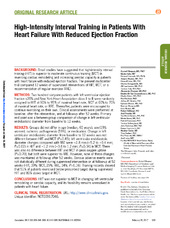| dc.contributor.author | Ellingsen, Øyvind | en_US |
| dc.contributor.author | Halle, Martin | en_US |
| dc.contributor.author | Conraads, Viviane | en_US |
| dc.contributor.author | Støylen, Asbjørn | en_US |
| dc.contributor.author | Dalen, Håvard | en_US |
| dc.contributor.author | Delagardelle, Charles | en_US |
| dc.contributor.author | Larsen, Alf Inge | en_US |
| dc.contributor.author | Hole, Torstein | en_US |
| dc.contributor.author | Mezzani, Alessandro | en_US |
| dc.contributor.author | Van Craenenbroeck, Emeline M. | en_US |
| dc.contributor.author | Videm, Vibeke | en_US |
| dc.contributor.author | Beckers, Paul | en_US |
| dc.contributor.author | Christle, Jeffrey W. | en_US |
| dc.contributor.author | Winzer, Ephraim | en_US |
| dc.contributor.author | Mangner, Norman | en_US |
| dc.contributor.author | Woitek, Felix | en_US |
| dc.contributor.author | Höllriegel, Robert | en_US |
| dc.contributor.author | Pressler, Axel | en_US |
| dc.contributor.author | Monk-Hansen, Tea | en_US |
| dc.contributor.author | Snoer, Martin | en_US |
| dc.contributor.author | Feiereisen, Patrick | en_US |
| dc.contributor.author | Valborgland, Torstein | en_US |
| dc.contributor.author | Kjekshus, John | en_US |
| dc.contributor.author | Hambrecht, Rainer | en_US |
| dc.contributor.author | Gielen, Stephan | en_US |
| dc.contributor.author | Karlsen, Trine | en_US |
| dc.contributor.author | Prescott, Eva | en_US |
| dc.contributor.author | Linke, Axel | en_US |
| dc.date.accessioned | 2017-09-21T11:12:00Z | |
| dc.date.available | 2017-09-21T11:12:00Z | |
| dc.date.issued | 2017-02 | |
| dc.Published | Ellingsen Ø, Halle M, Conraads V, Støylen A, Dalen HD, Delagardelle, Larsen AI, Hole T, Mezzani A, Van Craenenbroeck, Videm V, Beckers, Christle JW, Winzer, Mangner N, Woitek, Höllriegel, Pressler A, Monk-Hansen, Snoer, Feiereisen, Valborgland T, Kjekshus J, Hambrecht R, Gielen S, Karlsen T, Prescott E, Linke A. High-Intensity Interval Training in Patients with Heart Failure with Reduced Ejection Fraction. Circulation. 2017;135(9):839-849 | eng |
| dc.identifier.issn | 0009-7322 | |
| dc.identifier.issn | 1524-4539 | |
| dc.identifier.uri | https://hdl.handle.net/1956/16709 | |
| dc.description.abstract | Background: Small studies have suggested that high-intensity interval training (HIIT) is superior to moderate continuous training (MCT) in reversing cardiac remodeling and increasing aerobic capacity in patients with heart failure with reduced ejection fraction. The present multicenter trial compared 12 weeks of supervised interventions of HIIT, MCT, or a recommendation of regular exercise (RRE). Methods: Two hundred sixty-one patients with left ventricular ejection fraction ≤35% and New York Heart Association class II to III were randomly assigned to HIIT at 90% to 95% of maximal heart rate, MCT at 60% to 70% of maximal heart rate, or RRE. Thereafter, patients were encouraged to continue exercising on their own. Clinical assessments were performed at baseline, after the intervention, and at follow-up after 52 weeks. Primary end point was a between-group comparison of change in left ventricular end-diastolic diameter from baseline to 12 weeks. Results: Groups did not differ in age (median, 60 years), sex (19% women), ischemic pathogenesis (59%), or medication. Change in left ventricular end-diastolic diameter from baseline to 12 weeks was not different between HIIT and MCT (P=0.45); left ventricular end-diastolic diameter changes compared with RRE were −2.8 mm (−5.2 to −0.4 mm; P=0.02) in HIIT and −1.2 mm (−3.6 to 1.2 mm; P=0.34) in MCT. There was also no difference between HIIT and MCT in peak oxygen uptake (P=0.70), but both were superior to RRE. However, none of these changes was maintained at follow-up after 52 weeks. Serious adverse events were not statistically different during supervised intervention or at follow-up at 52 weeks (HIIT, 39%; MCT, 25%; RRE, 34%; P=0.16). Training records showed that 51% of patients exercised below prescribed target during supervised HIIT and 80% above target in MCT. Conclusions: HIIT was not superior to MCT in changing left ventricular remodeling or aerobic capacity, and its feasibility remains unresolved in patients with heart failure. | en_US |
| dc.language.iso | eng | eng |
| dc.publisher | Wolters Kluwer | eng |
| dc.rights | Attribution CC BY-NC-ND | eng |
| dc.rights.uri | https://creativecommons.org/licenses/by-nc-nd/4.0/ | eng |
| dc.title | High-Intensity Interval Training in Patients with Heart Failure with Reduced Ejection Fraction | en_US |
| dc.type | Peer reviewed | |
| dc.type | Journal article | |
| dc.date.updated | 2017-09-05T19:51:44Z | |
| dc.description.version | publishedVersion | en_US |
| dc.rights.holder | Copyright 2017 The Author(s) | |
| dc.identifier.doi | https://doi.org/10.1161/circulationaha.116.022924 | |
| dc.identifier.cristin | 1469626 | |
| dc.source.journal | Circulation | |

